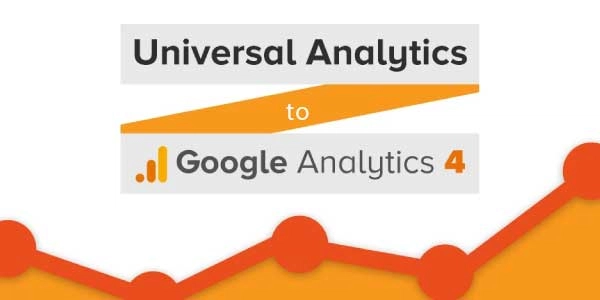Google has recently announced that it is sunsetting Universal Analytics on July 1 2023, after which Google Analytics 4 will go into effect. In their blog post, the company announced new hits won’t be processed by Universal Analytics on July 1 2023. Furthermore, Universal Analytics 360 will stop processing new hits starting October 1, 2023. Later, every data that has been previously processed by Universal Analytics will be kept for at least six months. The SEO experts explain more below:
Why is Google Moving Away from Universal Analytics?
Google has essentially modified the way the data is collected and reported within Google Analytics. While Universal Analytics depended on session-based tracking, Google Analytics 4 is all about user-based form of analytics. Universal Analytics also focused on different metrics such as session duration, landing page, pages per session, and more. On the other hand, Google Analytics 4 utilises an event-driven model.

According to the search engine giant, the measurement methodology of Universal Analytics is becoming obsolete. Also, Google Analytics 4 does not rely on cookies for user-centric measurement and is designed with privacy in mind.
“Though Universal Analytics offers a variety of privacy controls, Google Analytics 4 is designed with privacy at its core to provide a better experience for both our customers and their users. It helps businesses meet evolving needs and user expectations, with more comprehensive and granular controls for data collection and usage. Importantly, Google Analytics 4 will also no longer store IP addresses. These solutions and controls are especially necessary in today’s international data privacy landscape, where users are increasingly expecting more privacy protections and control over their data.”
What Makes Google Analytics 4 Appealing to Marketers?
Here are some advantages of Google Analytics 4 for SEO marketers:
- Better Tracking of User Journey
Google Analytics has changed the way it defines metrics. Earlier, we could count how many sessions a user had and other metrics can be broken down by device or platform. But now, Google Analytics emphasises on the users and their interactions, which are now called as Events.

You can now use a single set of metrics and dimensions to look at both web and app data. For example, a user may visit your website on their smartphone, revisit on their desktop, and then interact with your app by making a purchase or signing up for your service. Google Analytics 4 allows you to track these user interactions across different devices, so that tracking a user’s journey becomes a lot easier.
- More Focus on User Engagement:
One of the most exciting features of Google Analytics 4 is that the new, robust metrics employ AI to make predictions about customer behaviour. To make the engagement statistics more meaningful and useful, Google is replacing Bounce Rate with a series of more powerful engagement metrics. Alongside these new metrics, you’d also be able to see outbound clicks, video, scroll, and file download events, all of which should give you a much better sense of how your content is doing with users.
- Intelligent User Privacy Features:
In order to comply with the user privacy regulations, now and in the future, Google Analytics 4 lets you decide which personal data needs to be collected. So, for ad personalisation, you will have the ability to exclude certain properties or events. According to SEO services, cookies will become less relevant in favour of privacy.
- Better Audiences for Ads:
Google Analytics 4 is loaded with powerful measurement capabilities. You can take advantage of the new analyst tools to create the most relevant audiences for your ad campaigns. This will pave the way for better results and improved ROI. Google is also releasing predictive metrics to optimise your audiences easily. Predictive metrics can tell you how much you could potentially earn from a specific set of customers.
- Use Parameters for Granular Analysis:
Sometimes, you may need to have the right data for specific metrics for a more detailed analysis, which is when Parameters can help. Google Analytics 4 has made this much easier to use. According to Google, Parameters are additional sources of information that gives you a better understanding of an event.
For instance, if you are running an ecommerce store, Parameters can be used to describe the value of a purchase, where and how the purchase was made, as well as the cross-device user journey, if any.
- Visualisations Just Got Better:
You will notice several new visualisations with Google Analytics 4, alongside some enhancements with the existing ones. One of the most important features in Google Analytics 4 is the Analysis Hub. It consists of different analysis techniques such as funnel analysis, exploration, segment overlap, path analysis, and more that give you a better idea of user behaviour unlike the standard reports.
Analysis Hub lets you perform deeper analysis and create custom reports based on your requirements. ‘Reporting by Use Case’ and ‘Reporting by Industries’ let you create different reports based on the metrics you are interested in.
Switch to Google Analytics 4:

This is the right time for you to switch to Google Analytics 4, if you haven’t already. Granted, we have more than a year, but setting up the properties of Google Analytics 4 right now gives you a head start. If you begin tracking your preferred metrics now, you will have enough historical data to use when necessary. To get expert assistance on your SEO strategy, enquire about the SEO packages and sign up today!




 '
'